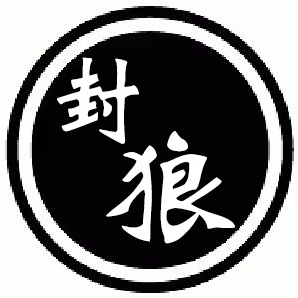The best products do not need tokens, and the best tokens do not need products. L1 is a serious meme coin, without pictures of cats/dogs.
Written by: Sam Kazemian, Frax Finance
Compiled by: Alex Liu, Foresight News
Many people are talking about how to value different assets in cryptocurrency, especially recently during the AI memecoin craze. But I want to talk about my approach to valuing the most important crypto assets: L1 tokens versus 'Type 2' (dapp/L2/'equity' tokens).
L1 tokens have a mysterious 'L1 premium'; no one has systematically explained this. Many believe it is a speculative Ponzi scheme, but the truth is quite the opposite. The L1 premium is a very important, fundamental attribute.
L1 assets (ETH, SOL, NEAR, TRX, etc.) are the 'sovereign scarce assets' corresponding to blockchain economies. They naturally become the most liquid assets in the chain economy. Other projects accumulate them, build products/DeFi with them, and incentivize their liquidity, making them safe-haven assets in crises.
The asset will issue tokens of other projects to scarce asset holders through liquidity + ICO + DeFi, airdrops, and other innovative methods, thereby 'earning interest'.
@DefiIgnas explained it well:
'L1 is a productive asset: you can use them to obtain ecosystem airdrops, stake for rewards, and as the ecosystem expands, their prices will rise. Moreover, if you account for the airdrops received from holding ETH, SOL, NEAR, etc., they perform better than spot prices. In contrast, L2 is a non-productive asset. You cannot use them to obtain native rewards, nor can you use them as Gas (except for STRK, MNT, METIS, and now ZK?), and the inflation brought by unlocking is usually too high. Their own ecosystem protocols rarely reward L2 token holders (through airdrops).'
Dapp tokens in sovereign economies (chains) represent the actual labor/GDP performed by humans in that economy. Scarce L1 assets will reap interest from the labor of those building the digital national economy (chain).
This is why 'Type 2 tokens' (also known as dapp/L2 tokens) are often compared with 'equity' and valued through P/E DCF models, while fundamental analysts remain puzzled by the mysterious 'L1 premium'. It doesn't need to be called 'L1 premium'; it is the asset premium of sovereign economics.
Many may know that I am not particularly fond of ETH KOLs, like @justindrake, who send signals to the market treating ETH assets as a business that needs to calculate price-to-earnings ratios for selling block space + blobs. They are turning ETH into 'Type 2' tokens. Unfortunately, they have succeeded.
L2 tokens are usually not sovereign scarce assets of their digital economy, even though they have vibrant builders on the chain. They fall into 'Type 2' and are categorized under price-to-earnings DCF valuation models. In fact, some L2s don't even have tokens! Like Base.
SOL has performed very well, but not because its TVL (Total Value Locked) has increased; rather, it's because people expect SOL to be burned/earn billions of dollars in some distant year in the future. ETH already has billions in revenue/burned, but it hasn't performed better than SOL. The rise of SOL is due to the entire economy of Solana being used in liquidity pools, memecoin trading, and DeFi, and you need it to participate in the Solana network.
People are actually working hard to build things, tokenizing their labor (as 'Type 2', i.e., dapp/PE tokens), in order to pay interest/rewards to SOL holders/stakers/LPs, while ETH KOLs are trying to transform ETH into DCF equity tokens, which have no value other than the cash flow generated from products sold by the Ethereum Foundation.
@MustStopMurad elegantly stated that the best products do not need tokens, and the best tokens do not need products. Sovereign scarce assets (L1 tokens) are meme coins, which is a serious meme without pictures of cats/dogs (cats/dogs living in digital nations). Balajis elaborated on the concept of network states. The power of this meme is finally starting to be understood. 'Type 1' (L1) and 'Type 2' (PE/equity/labor/L2) tokens are clearly different. A community can transform one community into another, but this is a long process.
Most importantly: the security brought by Gas + staking is a technical signal that embodies a social contract based on sovereign scarce assets, which itself is not an important value capture function. People are finally realizing this, including the legendary @danrobinson.
Therefore, there is no such thing as 'L1 premium', but rather the sovereign assets of digital nations, i.e., Type 1 tokens. It can be said to be the most powerful, fundamental meme, without any interesting pictures; it is real economics but with strong meme properties. My point is: only these two types of tokens.
Next month, @fraxfinance will announce the largest announcement to date, our vision roadmap for 2030. One of the most important things we will launch is how to transform 'Type 2' L2/governance/PE tokens into sovereign assets. I expect many 'Type 2' tokens to use it as a guide.







